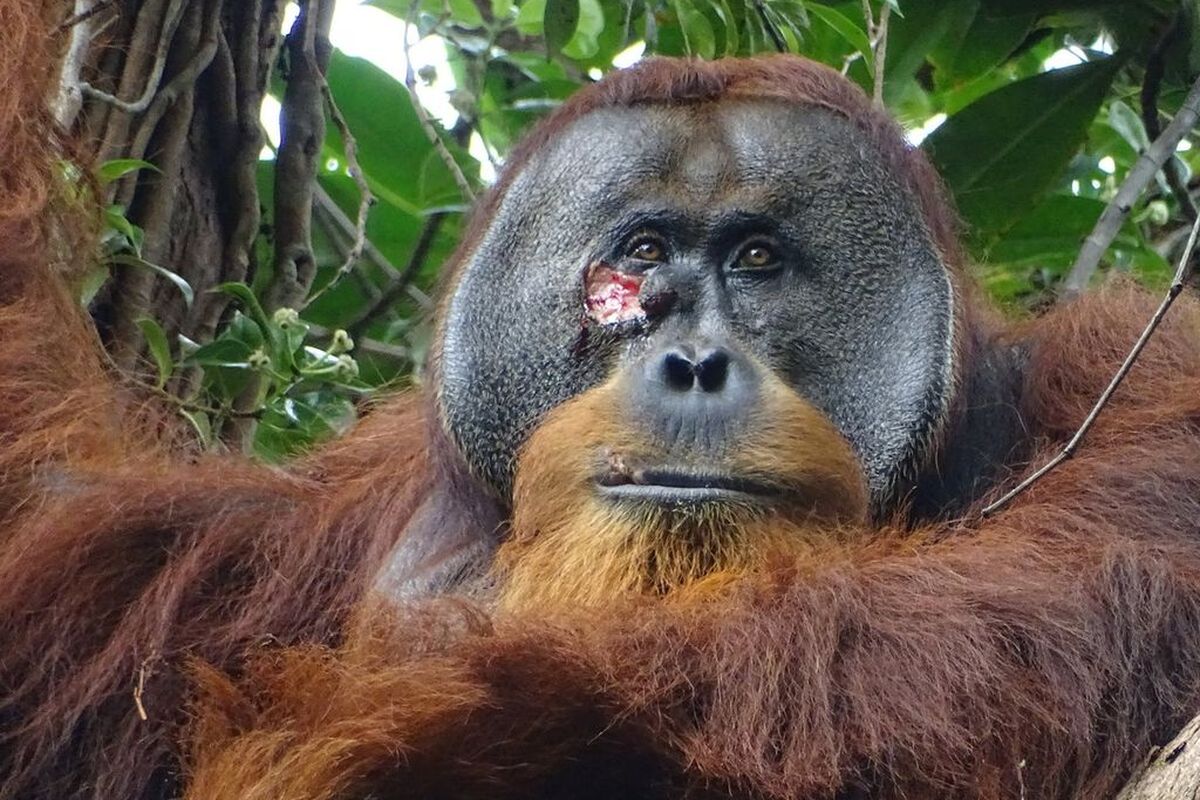A Sumatran orangutan named Rakus was observed treating a wound with tropical medicinal plants. This demonstrates how animals can use natural remedies to alleviate their own pain, as observed by scientists.
In a paper published in the journal Scientific Reports, Caroline Schuppli, senior author of the study and based at the Max Planck Institute for the Study of Animal Behaviour in Germany, and colleagues report on their findings while working in the Gunung Leuser National Park in Sumatra, Indonesia. The researchers observed Rakus with an injury in June 2022, likely from a fight with another male orangutan.
The team explained that while tracking a male Sumatran orangutan named Rakus, they found fresh wounds on his face. Three days later, they observed Rakus eating stems and leaves from Fibraurea tinctoria, a type of climbing vine.
In their findings, it was revealed that Rakus, previously observed using tropical medicinal plants to treat wounds, was then seen using his fingers to spread the plant's juice onto the wound on his right cheek. He pressed the chewed leaves of the plant like an emergency bandage to cover the open wound.
This is not the first discovery of wild animals treating themselves. For instance, Bornean orangutans are known to rub themselves with turmeric leaves, which can relieve muscle pain in humans. Chimpanzees also adeptly use medicinal plants to treat infections and insects to heal wounds. However, it is the first time a wild animal has been found using direct medication to treat an open wound.
In the available photos, the wound on the animal appeared to heal within a month without any issues.
Caroline Schuppli from Max Planck, who co-authored the study, stated that Rakus may have learned this technique from orangutans outside the park who are not monitored by researchers on a daily basis.
According to the team, this discovery provides further understanding of the origins of human wound care, first recorded in medical texts from 2200 BC. Schuppli revealed that this finding indicates that the basic cognitive abilities required for such behavior have existed in our ancestors for a long time.
The team plans to see if other injured orangutans will repeat the same behavior in the future. This could indicate that humans and orangutans may share similarities in behavior.
Check out the other interesting news on Seasia.co.




















